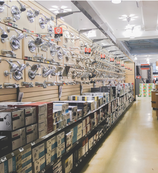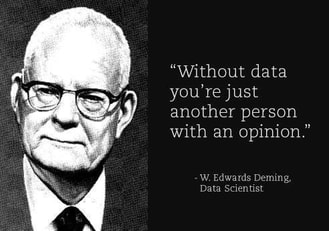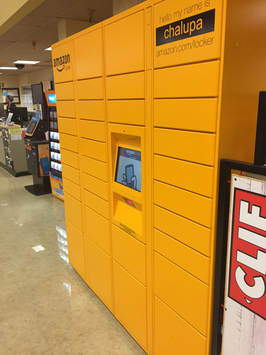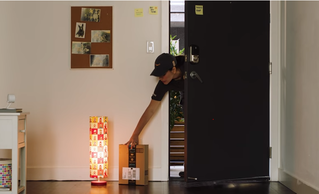|
For those of us that have been around the consumer hardlines business for a year or more know what a Product Line Review (are better known as PLR) is. Brick and mortar retailers having outlets nationally or throughout a region, product line reviews are customary for key product classifications. From a big picture view, the line review process – defined, orchestrated, and by invitation only – is a good thing. I continue to be surprised to the lack of effort and strategic planning many of the companies put forth for PLR’s. With many companies, where the leadership for approaching the line review is misunderstood or misplaced. My experience suggests Marketing take the leadership role and carefully engage sales leadership to co-pilot the course. Whatever function might lead the process, the critical part is to have strategic alliance within the organization for support, clarity, and harmony in the direction. Product Line Reviews can be daunting. I think the process is not only important, but provides the best opportunity for a level playing field. The key point is the process enables a collection of category specific inputs that serve the retailer and the consumer, as well as a preset agenda for suppliers to make the case for their goods and service.  For Retailers: it is the opportunity to review the product category in totality from suppliers. That supplier input is essential for the retail buyer to make an assessment to how the business is performing compared to other retail venues. There is likely no better authority on specific product categories than the supplier community. Additionally, the entry of category disrupters (those new or making entry into a product category, bring a fresh perspective to what might be a static segment.) For Consumers: the review and vetting process of Product Line Review can (operative word) ensure the best innovations, quality, and price for goods is being offered. It is important to understand those three elements may or may not be part of the retailer’s value-proposition. To make the point – the clothing selection at Ross Stores will be different than those at Nordstrom.  The Supplier: And that is what this article is about – the SUPPLIER. It is about the incumbent supplier defending and/or growing their business (important to understand that “defending and growing” one’s business may not be in harmony with one another, nor the objective. And that is ok.). It is also about the supplier that seeks to begin a transactional or strategic relationship with a retailer. These two sentences above can give you the sense of the complex nature of approaching Product Line Reviews. Line reviews are dangerous for the incumbent vendor. It is your business to defend and defending it you must. The supplier that doesn’t have the business and really wants in will be aggressive on multiple fronts to earn the business. A CEO I worked for gave me a quote I will never forget, as I was hand-wringing about the selling price to earn some new business. After presenting the facts, both pros and cons, he looked up from the supporting documents and said; “David, we can’t make money on business we don’t have.” That statement is so true and in this context is why an incumbent vendor has a lot of risk to bear. There are so many nuisances in the approach for a line review. It is too much to write for clarity in one article. But I believe you will understand and appreciate the multiple tentacles that need thought and clarity as supplier’s faceoff in the line review process. There are 3 Commandments that are the foundation for a successful Product Line Review approach. Do keep in mind, these 3 commandants do weave into one another. #1 – Know Thy Customer It has been said many times – Know Thy Customer and is Sales & Marketing 101. You must know your customer very well for the Product Line Review. You can bet your competition will. Buyers Goals. This is important to have that one-on-one meeting prior to the line review invitations being sent. Thoughtful, planned questions that lead to a discussion on common line review objectives – revenue performance, merchandising space, market-share erosion - to name a few. Those truly connected to the business should have a good feel for the what is working and what isn’t. That is more fuel for an insightful discussion. There is one simple mantra I encourage everyone to live by - - Buyers are Risk Averse. Consider the financial objectives they are charged with. It is not that the buyer is not a “merchant”, but they are charged to meet financial parameters. Their fundamental objectives typically are around leveraging sales per square foot, gross margin improvement, inventory/turns, and avoid markdowns. Why would they take a risk on something unknown, unproven, and unconfirmed? Layer on top of that the buyer doesn’t have unlimited shelf space or endless open to buy dollars. My point – get rooted with what the buyer’s objectives are. #2 – Know Thy Self As simple as it sounds; this can be the most challenging for a business as the line review approaches. Understanding your companies SWOT analysis, as well as the competitors, is good place to start. This part goes beyond SWOT and requires deep thought and collective agreement with all business stakeholders. For ease in making my point, the following are some parameters that might be considered.
 #3 – Just The Facts While all 3 of the commandments are important, this one is the most powerful. This commandment has the ability to deliver the stellar results you want. I believe the anchor for this commandment was so eloquently stated by W Edward Deming, a visionary business management leader – “Without data you’re just another person with an opinion.” That says it all, doesn’t it? Consider this:
The missing link is the real voice of the end user. This is the insight the supplier community brings to the merchandising team. The retail buyers are seeking thought leadership, product leadership, marketing leadership and the ability to flawlessly execute a program. It is your opportunity to control the conversation. All of this is embedded in the product line review process. But my hope is your business is constantly evolving and developing exciting new product to serve the end users needs and is something they want and willing to pay for. In the new product development process, there is a stage of validation and gathering information from the end user on new product or refinement to existing product (aka; New and Improved). It would be advised to enlist a professional marketing research firm as a partner. Having a creditable firm on your team is powerful. It also eliminates bias, predetermined mindset, and a narrow view of the business segment. You need a professional third-party firm to lead this charge. In fact; it could be a very wise decision to have them present for the formal line review meeting. In closing, there is an art to how these “facts” are presented. It is a balance of not too much shoveling the facts down the buyer’s throat and being delicate as to avoid an emotional flurry. This is a delicate process. A well-thought-out strategy to align with the customers goals / objectives, your company’s objective with fact-based data can bring great results. Line reviews do have the power to change one’s business for the good or the not so good. Here’s to your success for great Product Line Reviews!  David Kearsley Business leader and continuous learner in consumer durable products sold through various partner channels; retail, capital goods, infrastructure product. Transitioning to next senior leadership role with a company with a vision to grow, innovate, and create a sustainable value-proposition. My Website | My Blog In my process of networking with other business professionals, there is something unique I am hearing. Some is very direct. Some it is a bit more subtle, but the same message. The message – we have all heard before. But in the course of the last several weeks, I am hearing it from seasoned, senior level business professionals. The message? I do not feel appreciated. *Yikes* To be sure I understood and interpreted our conversation correctly, I called a few people back. Yep – lack of appreciation. It is not the job, the work requirement, the lack of resources, challenges in work or team, or the compensation. It is a most basic and simplest form of human needs when working in a business that requires an engaged leadership team. Another qualifying point is these people are high performers, smart/intellectual, confident professionals, above average emotional intelligence and seasoned leaders in their area of functional expertise. These comments started me thinking. These people are disenchanted, unhappy or have the feeling of being “neglected”. In fact; one of these people is in active search mode, interviewing for a better opportunity where people are valued more. [huh – those are not my words, but the person I spoke with.] The Culture or the Manager? Not knowing the reporting line or having he intimate details of the situation, I am not suggesting I have the answer. But, do feel I can share a perspective. CULTURE. Changing a business culture is difficult. Frankly, very hard. I have found describing a culture within a company is equally challenging – either a good culture or a bad one. The one truth is a culture is defined by its values. At a most simplistic level, a culture is what the organization believes in, what they stand for, and what the business wants to be known for. Leadership has the responsibility for upholding or staying true to the value system. MANAGER. To be clear - manager does not equal leader. In the case of these folks I have spoken with, they have a manager they have to report to. Not a leader that wants to work with them. In another article, this quote from Dan Rockwell (Leadership Freak blog) spoke volumes to me – "Do you believe that people with defeated spirits achieve great results?" This really does say it all, doesn’t it? Listening to these people, I am reminded to how powerful words of thanks, gratitude, encouragement, praise can mean. And how far it can go. The interaction over the last several weeks has reminded me of the void that can be created when People Management 101 is neglected. Note to those of us given the responsibility to lead and work with –
If you have the charge to lead, please lead. Simple words to let people know they are appreciated is a little thing to do.  David Kearsley Business leader and continuous learner in consumer durable products sold through various partner channels; retail, capital goods, infrastructure product. Seeking senior leadership role with a company with a vision to grow, innovate, and create a sustainable value-proposition. www.davidkearsley.com
Great Product does Win. There is a lot that can be wrapped up in that very simple statement. These are my 4 core beliefs on how Great Product Wins. 1. Bend the Light Beam. Innovate. Most business leaders I know believe their product offering can be better. The easy path is making existing product refinements – stronger, improve ergonomics, sharper, durable, easier operation, longer battery life, waterproof, and the list goes on. Hopefully you get my drift. Where many struggle is in developing and instilling a vision to make a dynamic shift. A shift to offering a superior product. A product that the end user really wants. A product the target audience will gladly pay (a lot more) for. A product that will make other products in the category inferior. I Believe Great Product Wins. 2. Know Thy Customer This is where the path to greatness begins to falter. Many leaders will confuse the customer and distribution channel. The railroad track mindset directs many leaders to solely focus attention on the distribution channel. I am not suggesting a total disregard related to distribution channels, but to expand thinking to consider all distribution venues for the purpose of reaching the targeted customer. Many times the Customer (end user) is overlooked or unintentionally abandoned. It’s been said many times; “Start with the customer.” So true. For example; a focus on big box retailers (i.e.; distribution channel) for new or great product. The big box stores are focused on the mass. That is; the lowest common denominator to maximize sales. The merchant is focused on serving “the known”, not the unknown. This will many times limit effectiveness in gaining traction with great product. 3. Value Delivered Expressing the value delivered is primarily marketing’s job. However; what I have experienced numerous times is an integrated, collaborative, team approach that validates the value proposition. The process tests hypothesis and theory to force reality. The value proposition is a conviction of truth. It is a message to be delivered with total confidence and expressed in clear, plain & simple words. This go-to-market approach is for the warrior – not the faint of heart. Great Product That Wins has an undisputable message of truth behind it. 4. Price is Commensurate to Greatness I can see my inbox filling up on this comment. Allow me to debunk what many will want to argue – Price is important. Price must be relative. A poor pricing strategy can (and likely will) sink a terrific product. Where most businesses fail is they think and actually believe their product have tangible and meaningful benefits. They are lying to themselves. These businesses and products are ignoring the marketplace and the voice of the customer. The reality is the perceived value being offered is not worthy and the product is relegated to price and only price. Ouch – that is painful. In a global economy and a world that is very flat, the battle for a lower price always looms. In my opinion, this is a terrible and indefensible competitive position to be in. Who wants to “fight it out” on just price? Great Product That Wins commands a price and the value be market weighted. Innovate and price the product to the real value it delivers. Easier said than done. Reaching the status of Great Product to Win is challenging. It is hard work. It requires a tribe of committed professionals doing heavy lifting. I can personally attest to doing it right pays huge dividends. Here’s to the journey of knowing Great Product Does Win!  David Kearsley Business leader and continuous learner in consumer durable products sold through various partner channels; retail, capital goods, infrastructure product. Seeking senior leadership role with a company with a vision to grow, innovate, and create a sustainable value-proposition. www.davidkearsley.com  The goal of every consumer products company is to earn the ultimate trust – which is loyalty – with the end user. It is the grand prize in marketing. And Amazon is on it’s way to earning the ultimate marketing bogie – Customer Trust. The approach Amazon has taken is multifaceted but with a very clear vision. There are several platforms that standout in my mind that are real and some in late stage development that will continue to widen the e-commerce gap in favor of Amazon. Delivery to Where Customer Wants It Certainly; Amazon and other online retailers have mastered the delivery of orders to home and business addresses. With the rash of “porch poaching” thieves taking the deliveries before the rightful owner can retrieve, is gaining national attention. I have been the victim of this. Not once, but twice within a two-week period during the holiday season with Amazon a couple of years ago. The orders were more expensive electronic goods, so not a cheap replacement. Amazon customer service didn’t bat an eye, and replaced the order without any hassle. I feel certain any other e-commerce retailer would have done the same. Amazon is taking a step ahead. . .  Amazon Lockers are brilliant.
Providing options and solutions for delivery is part of an e-commerce value chain proposition. Amazon is taking it to the next level. It provides end-to-end trust – Purchase of Product, at Price offered, Delivered on-time, and secured that the shipment is available for the customer to receive. When the trust factor is fulfilled seamlessly, that is where loyalty is created. That loyalty enables great things and momentum to happen in gaining share of wallet. New products, some pricing latitude, and much more.  Knock Knock. . . I’ll Let Myself In Amazon’s latest venture / offering is Amazon Key. This will truly test the amount of trust the consumer will allow Amazon.
The dynamic at play is huge. It is the continued evolution or dimensional shift to how consumers will purchase and receive products into their homes. Think about it – Amazon is a service provider of transactions of selling products to the end user that have disrupted traditional supply chain mentality with the use of technology. Once in the home, that seems like mecca for consumer engagement and countless other products and services they could provide through the single marketing platform. Very exciting times and look forward to what comes next as the continuum of consumer products method of reaching the end user will continue to change and shift! Just for a Smile. Have to pass this along. Courtesy of the Reddit community…. “It kinda makes sense that the target audience for fidget spinners lost interest in them so quickly.” Hope you have a great week!  Business leader and continuous learner in consumer durable products sold through various partner channels; retail, capital goods, infrastructure product. Seeking senior leadership role with a company with a vision to grow, innovate, and create a sustainable value-proposition. www.davidkearsley.com  Starting a few months ago with Amazon announcing the purchase of Whole Foods, I have been taken by the blood-letting Wall Street has bestowed across the industry. In fact; the financial punishment for most in the retail space since this announcement. My personal disclaimer on this post: I am not a retail operator, nor an investment banker. But I am a successful supplier of consumer goods to retail. Durable goods, not consumable goods (drinks, chips, etc.). My thoughts are not to claim supreme answers, but more to offer thoughts from a 10,000 foot view with 3 thoughts. 1. Stick To Your Knitting Kroger Co. (KR) has become the poster-child for what Amazon could do to the grocery industry by acquiring Whole Foods. Kroger could do itself good by focusing on making their business (stores and digital) the top-of-mind consumer destination. With 2,800 stores, multiple store front brands, spanning 35 states, Kroger has a great platform to do mind-blowing things. Amazon’s Whole Foods has some 470 stores and at some point will leverage the power of the digital platform. I believe Kroger could make some very progressive moves to not only hold share, but grow dramatically. I do not discount the power and prowess in operational and supply chain proficiency Amazon has proven. They meet the consumer “right where the customer wants to be”. Amazon will certainly carve out their fair share of the grocery market. About a month ago, Kroger announces they will launch a restaurant business called Kitchen 1883. Hmmm. Is it me, or does that seem like a lack of focus? The first prototype is a stand-alone store. But even if the thought is to integrate a restaurant into stores, is that what the consumer wants? Another restaurant, particularly one inside of a Kroger? Kroger should stick to grocery and take advantage of building a compelling digital model and enhance the in-store experience to serve the consumer. 2. Meet The Competition Head On Things change. Consumer likes and dislikes change. Technology has proven to be a great enabler. Grocery competitors are making moves to prepare for the future. Walmart buys Jet.com in 2016, and recently Parcel, which has a model for rapid delivery to consumer’s front door. Both significant in Walmart’s goal to compete with fury in the digital retail space. In the pure play grocery space, Albertsons announces the purchase of the meal-kit delivery service, Plated. This is very logical for grocery to have a hand in the meal kit business. Experts expect this food home delivery service sector to grow more than 70% in the next 5 years. With all of this recent activity, Kroger showing no signs of making a correction in course. 3. And, It’s Not Going To Get Any Easier The slim margins in the grocery business make things tough, no doubt about it. As competition heats up margins will be under increased pressure. Add to the mix the entry and expansion in the US market of two powerful German grocery retailers - Aldi and Lidl. The pressure on traditional grocers will be intense. These are serious competitors and have the balance sheet and competitive will to gain significant market share. The evolution of how the grocery industry is going to take shape will be interesting. There will be winners and losers. I am not convinced Amazon will rule the world, but they will put points on the board in grocery. The losers – some will falter. I have visions of how Kmart could not shift to compete with Walmart in the early days. Where is Kmart today?  David Kearsley Business leader and continuous learner in consumer durable products sold through various partner channels; retail, capital goods, infrastructure product. www.davidkearsley.com |
David KearsleySenior Sales, Marketing & Business Development Executive Archives
September 2019
Categories |


 RSS Feed
RSS Feed
